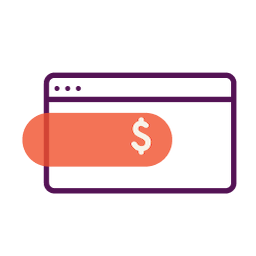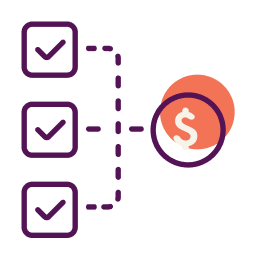You’re no bookkeeping expert, and yet, if you run a business, you need to be on top of managing your accounting records. You’ll quickly become familiar with financial statements and balance sheets, but don’t overlook a key but simple activity: bank reconciliation.
Knowing how much cash is in your bank account is essential for keeping good accounting records, but account reconciliation goes a little deeper than that. Let’s look at what it is and how you can become a bookkeeping guru!
What is a Bank Reconciliation?
Bank account reconciliation involves aligning the bank transactions and balance of your business bank account with what your accounting software has recorded. Any discrepancies between the two must be reconciled to balance.
Keeping your cash account, accounting software, and bank statement balance aligned is important because the way you record and categorize business expenses will come into play when you file your taxes. Also, should you ever seek funding from investors, they will want you to have accurate bookkeeping records.
Required Information to Create Bank Reconciliation Statement
Before we look at how to reconcile your bank statement, let’s start with what you need to do so. Hopefully, you aren’t using a paper general ledger or cash book like you would years ago and have invested in accounting or bank reconciliation software to manage your finances more easily. This will make reconciling your business bank account much simpler.
You’ll also need access to your business bank statements for the months you want to reconcile transactions. Some people prefer to just use their online banking details rather than a statement. The choice is up to you.
You’ll also want details on any uncleared checks so you can include them in the process. The last thing you want is to overdraft your checking account because you have a missing transaction you forgot about!
Also if you use business credit cards, have those statements handy so you can remember what transactions you have on them and categorize those expenses appropriately.
How Do You Reconcile a Bank Statement?
Now that you’ve got everything ready, it’s time to dive into your bank reconciliation. Either using the bank statements you gathered or your online banking details, look through each transaction and make sure it is recorded in your accounting software.
Add in any uncleared transactions that might not show up in your bank account yet, including uncleared checks and credit card charges that you need to pay off.
Now make sure each journal entry in your software is properly categorized. Most software attempts to categorize regular expenses, but it’s not always accurate. Make sure, for example, that any transfer you make to your personal account is labeled as wages or your purchase at the office supply store is labeled as office supplies so that, when you file taxes, everything is neat and organized.
Once you’re done, your cash balance in your accounting software should match your bank balance. If it doesn’t, you’ve missed something or made an error, so go back and find it.
Understanding the Bank Reconciliation Statement
The more you dive into your bank reconciliation statement, the more unfamiliar terms you may encounter. Here are a few you need to be familiar with.
Deposit in Transit
This refers to a deposit that has been made and recorded but has not yet processed in your bank account.
Outstanding Check
This is the opposite of cleared checks: outstanding checks have been written and deposited, but haven’t been cleared by the bank.
NSF Check
NSF means “non-sufficient funds,” and in this case, refers to a check that came from a bank account that didn’t have enough cash to cover the amount. In other words, the check bounced. Be aware that you may be charged a bank fee for NSF checks.
Bank Chargeback
If you accept payments via debit or credit card, a chargeback happens when a customer asks for a refund. Your account is debited the refund amount.
How Often Should You Do Bank Reconciliation?
The more often you run a bank reconciliation report, the less work you make for yourself in the reconciliation process in the future. You could spend a few minutes each week reviewing your bank statement or cleared transactions, or spend hours doing it every few months.
Keep in mind: the more transactions your business has, the more work you’ll have reconciling. If you have the budget for it, you might consider hiring an accountant or bookkeeper to manage your accounting software and your cash balance.
Why is Bank Reconciliation Important?
There are many reasons why balancing your bank statement and cash flow is important to your business. First of all, it can help you spot potential fraud. If you are aware of the transactions you’re making in your business, you’ll know if there’s suddenly an unusual charge you didn’t authorize.
You can also catch errors faster. We’re all human, so paying twice on the same invoice, missing payments, or incorrectly calculating a cash balance can happen. The more hands-on you are with your accounting software, the fewer errors you’ll make.
Another reason your reconciliation report is so important: keeping track of the cash flow in and out of your business gives you an accurate picture of the financial health of the company. You can make decisions about the future if you know where you’re spending your money and where your revenue is coming from.
Also if you decide to take out a loan to grow your business, you’ll need accurate accounting records. The best business loans may require bank statements and financial reports for the past few years, so if you’re regularly managing your bank reconciliation process, you’ll have less footwork to deal with in the loan application process.
(If you’re applying for a loan, you’ll also need solid business credit scores. Now’s a great time to check yours and see what you qualify for.)
Nav’s Verdict: Bank Reconciliation
It may not be your favorite pastime, but keeping an eye on your bank statements and accounting software is what smart business owners do. Carve out time to reconcile your bank account regularly, and your financial headaches will all but vanish.
This article was originally written on September 11, 2020.



i need examples of bank reconciliation